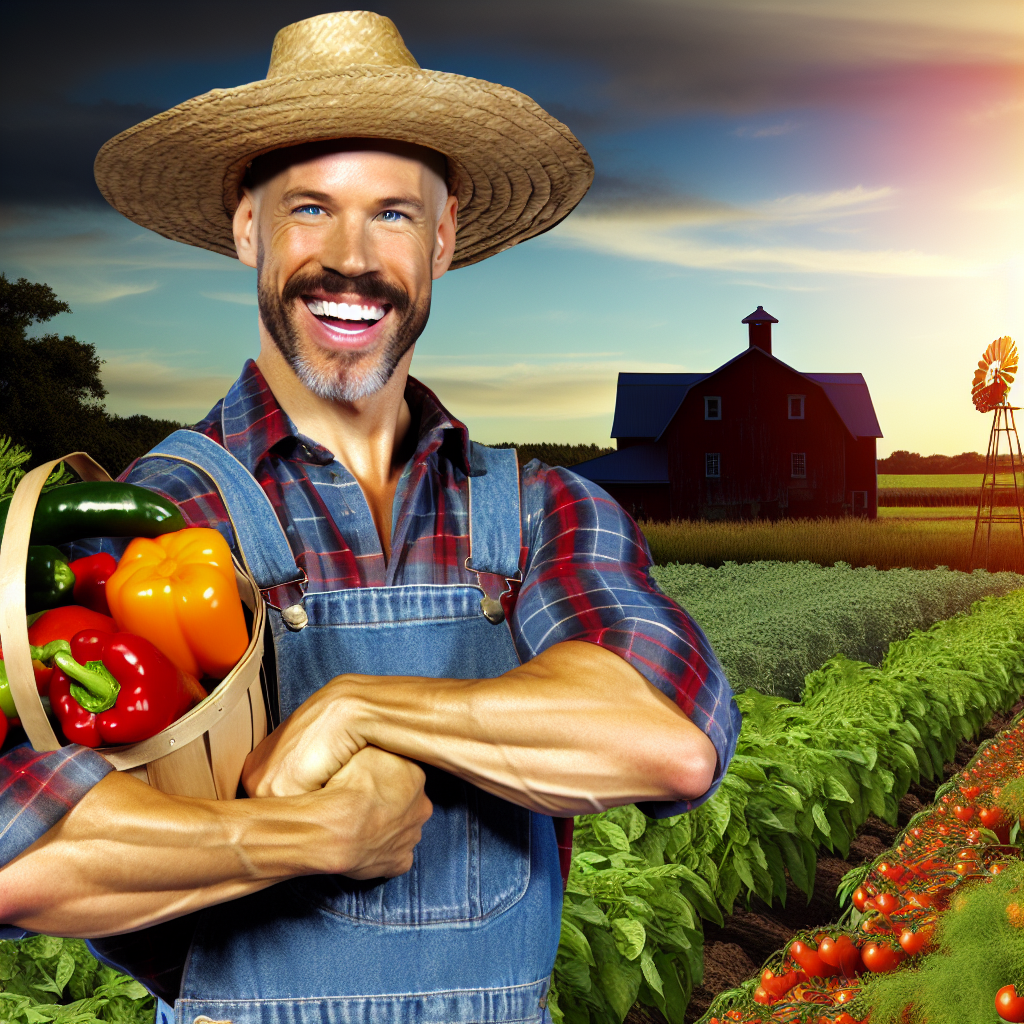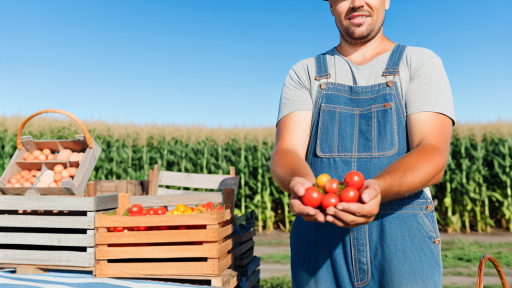Introduction to Local Food Sourcing
Local food sourcing refers to obtaining food from nearby producers.
This practice fosters connections between farmers and consumers.
It emphasizes freshness and supports local economies.
Additionally, local food sourcing reduces transportation emissions.
Consequently, it contributes positively to environmental sustainability.
Defining the Concept
Local food sourcing is about prioritizing regional products.
This includes fruits, vegetables, meats, and artisanal goods.
Farmers market their produce directly to consumers.
Hence, this model promotes seasonal eating and diversity.
Importance of Local Food Sourcing
Supporting local agriculture strengthens community resilience.
Farmers benefit from increased profits and reduced waste.
Moreover, consumers gain access to fresher and healthier options.
In addition, local sourcing helps preserve culinary traditions.
This approach enhances food security and biodiversity.
Economic Benefits
Local food sourcing stimulates regional economies.
Transform Your Agribusiness
Unlock your farm's potential with expert advice tailored to your needs. Get actionable steps that drive real results.
Get StartedMoney spent on local food circulates within the community.
Thus, it creates jobs and improves local livelihoods.
Environmental Impact
Transportation contributes significantly to carbon emissions.
By sourcing locally, farmers and consumers minimize their footprints.
This effort enhances ecological sustainability for future generations.
Cultural Significance
Local foods reflect the heritage and culture of a region.
They foster a sense of identity and community pride.
Furthermore, local food events promote social interaction.
Understanding the Benefits of Local Food Sourcing for Farmers and Communities
Boosting Local Economies
When farmers source locally, they inject money back into their communities.
This keeps food dollars circulating within the area.
Consequently, local businesses thrive and job opportunities increase.
Improving Food Quality
Local food sourcing often leads to fresher produce.
Shorter supply chains reduce the time from farm to table.
Farmers can control quality more effectively when working with local markets.
Strengthening Community Ties
By sourcing locally, farmers build connections with their customers.
This fosters a sense of community and shared responsibility.
Additionally, relationships can lead to collaborative opportunities and support.
Environmental Sustainability
Local food sourcing reduces transportation emissions.
It lessens carbon footprints associated with long-distance shipping.
Furthermore, it promotes sustainable farming practices and biodiversity.
Adapting to Consumer Trends
Consumers increasingly seek local and fresh products.
Farmers who adapt to this trend can enhance their market reach.
Consequently, they can also attract eco-conscious buyers.
Access to New Markets
Building relationships with local restaurants can open new avenues for sales.
Showcase Your Farming Business
Publish your professional farming services profile on our blog for a one-time fee of $200 and reach a dedicated audience of farmers and agribusiness owners.
Publish Your ProfileFarmers can showcase their unique offerings to competitive markets.
Additionally, sourcing locally supports farm-to-table initiatives.
Enhancing Food Security
Local food systems strengthen food security in communities.
A diversified local food supply enhances resilience against disruptions.
Moreover, it allows communities to respond quickly to food needs.
Exploring Different Models of Local Food Distribution
Farmers’ Markets
Farmers’ markets provide a direct sales platform for local farmers.
They foster relationships between producers and consumers.
These markets often feature seasonal and fresh produce.
Additionally, they promote local economic growth.
Setting up a stall at a farmers’ market reduces transportation costs.
Farmers can also gain valuable feedback from customers.
Regular participation builds a loyal customer base over time.
Cooperatives
Cooperatives are another effective model for local food distribution.
They allow farmers to pool resources and share risks.
This collective approach often lowers operating costs.
Members gain access to markets they might not reach alone.
Additionally, cooperatives strengthen community ties.
They often emphasize sustainable and organic practices.
Participating in a cooperative can enhance bargaining power.
Community Supported Agriculture (CSA) Programs
CSAs represent a unique way for farmers to engage consumers directly.
In a CSA, members pay upfront for seasonal produce.
This model provides farmers with early capital for planting.
Members enjoy fresh, locally grown food throughout the season.
CSAs foster a sense of community among participants.
Additionally, farmers can educate consumers about food production.
This model helps to build trust between consumers and producers.
Transitioning to Local Sourcing
Benefits of Local Sourcing
Local sourcing reduces carbon footprints through shorter transportation routes.
Additionally, it supports local economies and creates jobs.
Buying local often results in fresher products for consumers.
Moreover, farmers can maintain better control over their products.
Challenges in Local Food Distribution
Despite the benefits, local food distribution has challenges.
Farmers may encounter regulatory hurdles in selling directly.
Additionally, fluctuating demand can complicate production planning.
Farmers also face competition from larger distributors.
Building a customer base requires consistent marketing efforts.
Delve into the Subject: Implementing Local Food Sourcing in Your Farming Plan
Strategies for Building Relationships with Local Restaurants and Grocery Stores
Establish Clear Communication
Effective communication is essential in any partnership.
Engage in regular conversations with local chefs and store managers.
Ask about their specific needs and preferences.
Provide updates on your harvests and available products.
Showcase Your Farming Business
Publish your professional farming services profile on our blog for a one-time fee of $200 and reach a dedicated audience of farmers and agribusiness owners.
Publish Your ProfileParticipate in Local Events
Local events are excellent opportunities to connect.
Attend farmers’ markets, food festivals, and cooking demonstrations.
Bring samples of your products to showcase quality.
Engage attendees with stories about your farming practices.
Offer Unique Products
Distinguish yourself by offering unique or specialty items.
Consider growing heirloom varieties or organic produce.
Highlight the benefits of sourcing local products.
Local restaurants often seek unique items to enhance their menus.
Develop a Flexible Pricing Structure
Flexibility in pricing can foster ongoing partnerships.
Consider offering volume discounts or seasonal pricing.
Communicate clearly about your pricing strategy.
This approach helps build trust and reliability.
Follow Up and Seek Feedback
After initial interactions, follow up with partners regularly.
Ask for feedback about your products and services.
Use feedback to make improvements where necessary.
Continual improvement strengthens relationships with businesses.
Utilize Social Media for Promotion
Social media platforms can boost your visibility.
Share your farming stories and product availability online.
Engage with local businesses through tags and mentions.
This increases awareness of your brand and offerings.
Uncover the Details: Farm Fresh: How Small Farms Are Building Stronger Local Communities
Utilizing Social Media and Online Platforms to Promote Local Products and Connect with Consumers
Leveraging Social Media for Engagement
Farmers can utilize social media platforms effectively to engage with their community.
They should create profiles on popular platforms like Facebook and Instagram.
Posting regular updates about farm activities captivates audiences.
Engaging content could include behind-the-scenes photos and videos.
Additionally, sharing stories about produce fosters connections with consumers.
Building an Online Presence
Having a dedicated website enhances visibility in the competitive market.
Farmers should consider using platforms like Shopify for e-commerce.
Integrating a blog can provide valuable information to attract visitors.
It helps if the blog includes recipes and sustainability tips.
Search Engine Optimization (SEO) increases the likelihood of attracting local customers.
Encouraging Community Interaction
Farmers can host live events on social media to showcase products.
These events allow consumers to ask questions in real-time.
Contests and giveaways can also encourage community participation.
Sharing user-generated content enhances community engagement.
This also builds brand loyalty and trust among consumers.
Collaborating with Local Influencers
Partnering with local food influencers can expand reach effectively.
These influencers can share products with their established followers.
Such collaborations attract attention to the farm’s offerings.
Farmers should choose influencers who align with their values.
Showcase Your Farming Business
Publish your professional farming services profile on our blog for a one-time fee of $200 and reach a dedicated audience of farmers and agribusiness owners.
Publish Your ProfileThis helps in creating authentic and relatable content.
Integrating Online Marketplaces
Farmers can utilize platforms like Etsy and local farmers’ markets online.
These marketplaces provide access to a broader audience beyond local reach.
Consistent listing updates engage and inform potential buyers.
Farmers should ensure clear descriptions and enticing photos of products.
By doing so, they can differentiate themselves from competitors.
See Related Content: Beyond Organic: How Farm-to-Table Is Evolving with Consumer Demands
Sustainable Practices in Local Food Sourcing
Organic Farming
Organic farming focuses on natural processes and materials.
This approach eliminates synthetic pesticides and fertilizers.
Farmers can enhance soil health using organic methods.
Crop rotation helps maintain nutrient levels in the soil.
It also reduces the risk of pests and diseases.
Organic farming promotes biodiversity on the farm.
Farmers cultivate a variety of crops to support wildlife.
These practices lead to healthy ecosystems and resilient farms.
Biodiversity
Biodiversity is essential for sustainable food production.
Diverse ecosystems are more productive and resilient.
Farmers should plant a mix of crops and native plants.
This diversity increases habitat for beneficial insects.
Integrating livestock with crops also promotes biodiversity.
Cover crops improve soil structure and prevent erosion.
They enhance nutrient cycling and water retention.
By fostering biodiversity, farmers can combat climate change.
These practices ensure sustainable yields for future generations.
You Might Also Like: Farm-to-Table 2.0: How Direct Farm Sales Are Redefining Local Markets

Navigating Regulations and Certifications for Local Food Production
Understanding Local Food Regulations
Farmers must first learn about local food regulations.
These laws can vary significantly by region.
Understanding these rules helps avoid potential pitfalls.
Farmers should consult local agricultural departments for guidance.
Additionally, established networks can provide valuable support.
Obtaining Necessary Certifications
Certifications enhance credibility in local food sourcing.
Various certification programs exist, focusing on different aspects.
Organic certification, for example, is popular among consumers.
Farmers should investigate relevant certifications for their products.
Each certification will have specific requirements and processes.
Maintaining Compliance with Health Standards
Health standards are crucial for local food production.
Farmers must adhere to safety and sanitation regulations.
Regular inspections ensure compliance and consumer safety.
Documenting processes and practices can streamline inspections.
Engaging with local health departments creates helpful partnerships.
Showcase Your Farming Business
Publish your professional farming services profile on our blog for a one-time fee of $200 and reach a dedicated audience of farmers and agribusiness owners.
Publish Your ProfileLeveraging Grants and Funding Opportunities
Many farmers can access financial resources for local food initiatives.
Grants often support specific projects in local food sourcing.
Farmers should research grants from agricultural agencies and nonprofits.
Some programs offer funds for sustainability and innovation.
Networking with other farmers can reveal available funding sources.
Connecting with the Community
Building relationships with local communities is essential.
Farmers should participate in farmer’s markets and local events.
Engaging with consumers fosters trust and loyalty.
Additionally, local organizations can provide recruitment opportunities.
Working closely with community members enhances local food networks.
Case Studies: Successful Local Food Sourcing Initiatives by Innovative Farmers
Introduction to Local Food Sourcing
Local food sourcing fosters connections within communities.
It strengthens the relationship between farmers and consumers.
Farmers benefit from increased sales and community support.
Case Study: Green Leaf Farms
Green Leaf Farms implemented a farm-to-table initiative.
This initiative connects local restaurants with fresh produce sources.
As a result, sales have increased significantly.
Additionally, local chefs create seasonal menus that showcase fresh ingredients.
This not only benefits the farm but enriches the dining experience.
Impact on Community
Local consumers appreciate knowing where their food comes from.
This transparency builds trust and loyalty.
Furthermore, it reduces food miles, enhancing sustainability.
Case Study: Harmony Fields Cooperative
Harmony Fields adopted a collaborative approach to food sourcing.
The cooperative includes multiple farmers who share resources.
By working together, they streamline distribution to local markets.
This partnership has lowered costs and increased efficiency.
Benefits to Members
Members enjoy greater visibility and access to larger markets.
Shared resources lead to enhanced marketing efforts.
Cohesiveness within the group fosters innovation.
Case Study: Berry Patch Organic Farm
Berry Patch transformed its operation by hosting on-farm events.
These events educate the public about local agriculture.
Workshops and U-pick days attract families and tourists alike.
This initiative significantly boosts sales and fosters community engagement.
Community Engagement Strategies
Events create a fun atmosphere that encourages participation.
They also provide educational opportunities about sustainable practices.
Local schools often partner for field trips to teach children about farming.
Successful Local Food Sourcing Initiatives
These case studies illustrate the power of local food sourcing.
Successful initiatives rely on community involvement and collaboration.
By embracing local food sourcing, farmers can thrive sustainably.
Future Trends in Local Food Sourcing
Technology
Technology is reshaping local food sourcing processes.
Farmers increasingly use apps to connect with local consumers.
Showcase Your Farming Business
Publish your professional farming services profile on our blog for a one-time fee of $200 and reach a dedicated audience of farmers and agribusiness owners.
Publish Your ProfileThese platforms streamline purchasing and delivery logistics.
Furthermore, precision agriculture tools enhance yield efficiency.
Farmers can utilize drones to monitor crop health.
This technology leads to better decision-making for resource allocation.
Consumer Preferences
Consumer demand for locally sourced food continues to grow.
Shoppers increasingly seek fresh, seasonal products.
Many prioritize sustainable farming practices when making purchases.
As a result, farmers must adapt their marketing strategies.
Communicating story and origin enhances product appeal.
Online and social media platforms serve as vital outreach tools.
Climate Considerations
Climate change significantly impacts agricultural practices.
Farmers must consider environmental sustainability in their operations.
Adopting regenerative practices improves soil health.
This not only increases resilience but also boosts crop yields.
Furthermore, local sourcing reduces transportation emissions.
Consumers increasingly appreciate brands that prioritize sustainability.
Additional Resources
Farm-to-Table and Hyper-Local Sourcing Transforming the Food …




